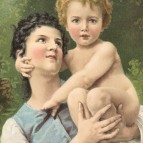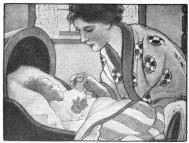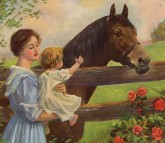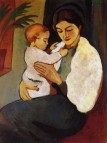A Serene Day (Mother's Day)
The most famous movement from "The Carnival Of The Animals" (1886) by French composer Camille Saint-Saens(1835-1921). The musical setting for Pavlova's legendary "Dying Swan."
An Ounce Of Mother (Mother's Day)
"Giga" from Suite for Strings, oft-performed chamber piece by Baroque era Italian violinist & composer Arcangelo Corelli(1653-1713).
Hand That Rocks The Cradle, The (Mother's Day)
"Wiegenlied" (Cradle Song) by German composer Johannes Brahms (1833-1897). Composed in 1868 in honor of the birth of a friend's second child, the most celebrated of lullabies.
I Want A Girl Just Like The Girl (Mother's Day)
5 million-seller, 1911, music by Harry Von Tilzer (born Aaron Gumbinksy, 1872-1946), lyrics by William Dillon. Von Tilzer also wrote the music for "A Bird In A Gilded Cage" and "Wait 'Til The Sun Shines, Nellie," and was the older brother of another Tin Pan Alley notable, Albert Von Tilzer ("In Apple Blossom Time," "Take Me Out To The Ballgame").
M-O-T-H-E-R (Mother's Day)
Music by Theodore Morse (1873-1924), lyrics by Howard Johnson, first popularized by music hall star Eva Tanguay, the "I Don't Care" girl. Johnson was also the lyricist for "I Scream, You Scream, We All Scream For Ice Cream" and "When The Moon Comes Over The Mountain."
Mother Machree (Mother's Day)
Music by Ernest Ball and Chauncey Olcott, lyrics by Rida Johnson Young, from "Barry Of Ballymore," 1911. All of the song's creators have numerous prominent credits, among them, Ball & Olcott's "When Irish Eyes Are Smiling" and Young's lyrics for "Naughty Marietta" ("Italian Street Song," "Ah! Sweet Mystery Of Life")and "Maytime" ("Will You Remember") "Machree" is a term of endearment: "my dear," "dearest"...






